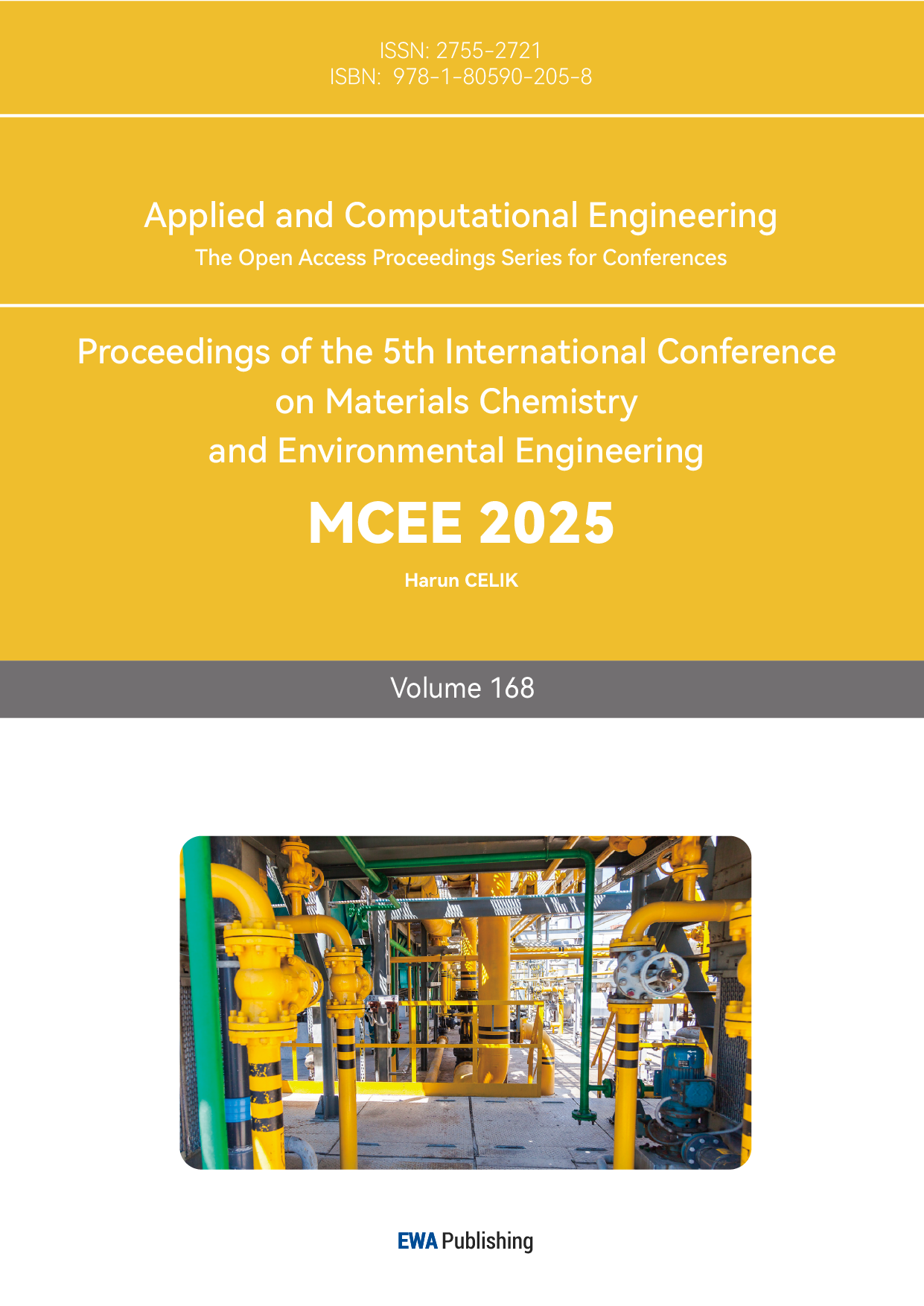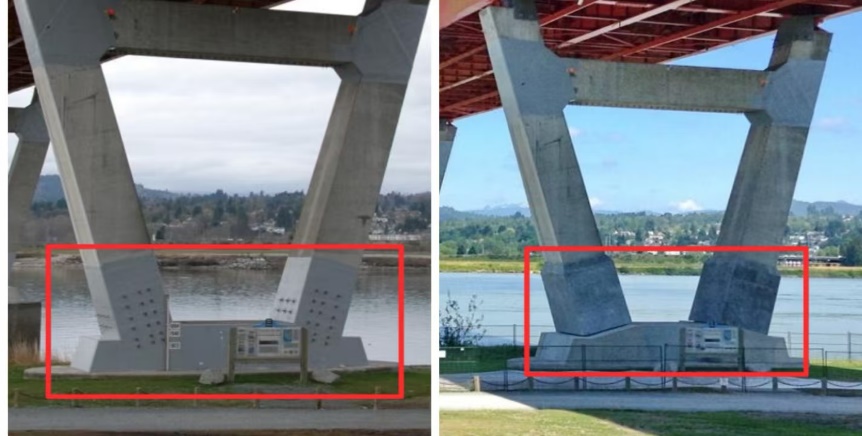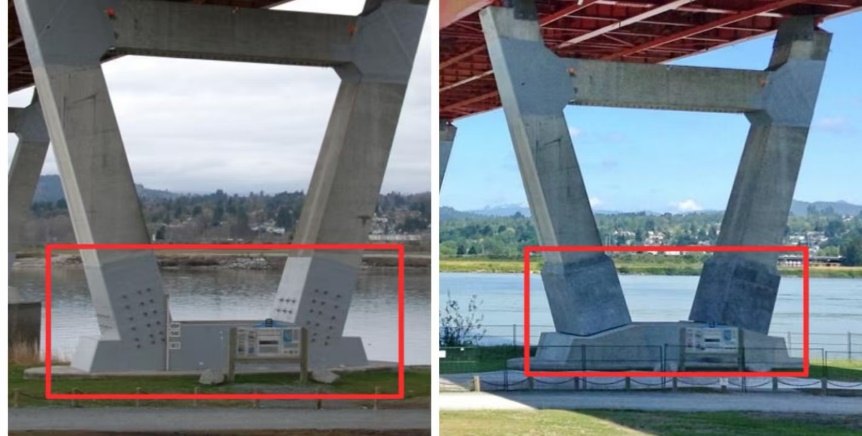1. Introduction
Bridges are critical constituent parts in the construction of transportation infrastructure, their safety and durability are crucial to the operation of the entire transportation network. However, with the augmentation of traffic burden, the extension of service lifespan, the frequent passage of overloaded large vehicle and the impact of harsh surroundings, traditional concrete bridges are gradually facing numerous problems such as aging, cracking and corrosion [1]. These problems not only weaken the bearing capacity and service life of the bridge but may even lead to the collapse of the bridge, which in turn causes huge economic losses [1]. Due to many deficiencies (large brittleness, poor durability, heavy structure weight) in traditional concrete materials, it is particularly important to seek a material with superior properties such as UHPC for reinforcement and maintenance, ensuring the long-term safe use of bridges.
Ultra-high Performance Concrete (UHPC) is an advanced composite material designed based on the theory of densified particle packing. With its exceptional mechanical properties and excellent durability, UHPC has become one of the most innovative cement-based engineering materials in the past few decades and has been widely used in the field of bridge strengthening engineering [2]. Traditional bridge strengthening methods, such as using normal concrete (NC) to enlarge cross-section, can enhance load-bearing capacity, but also introduce some negative consequences. Firstly, the self-weight of the structure increases substantially, which places additional stress on the bridge's foundation and sub-support, potentially accelerating aging or causing other structural issues. Secondly, increasing the cross-section may affect the clearance height of the bridge and limit the utilization of the space under the bridge. In contrast, UHPC, with its higher density, can effectively reduce the size of concrete components while maintaining load-bearing capacity, thus reducing extra weight and making the structure lighter and more aesthetically pleasing [3]. Therefore, using UHPC to strengthen and optimize the structure of old bridges may be a more desirable solution.
Therefore, based on the material properties and advantages of UHPC, this article analyzes the typical diseases and reinforcement requirements of bridge structures through relevant literature. Further delves into research on its specific application in bridge decks, main girders and piers. Finally, the challenges of UHPC material in practical construction application are proposed, to provide reference for the optimization of bridge reinforcement engineering in the future.
2. The development process and material properties of UHPC
2.1. Historical development of UHPC
Since the advent of UHPC materials in the last century, countries around the world have invested a lot of manpower and material resources in the research and application of UHPC. There is an increased demand for infrastructure in the Asia-Pacific region with the growth of the economy [4]. As shown in figure 1, UHPC has been used as a material for bridge construction globally. The pedestrian bridge, completed in 1997 in Sherbrooke, Canada, was the first UHPC structural bridge [5]. In 2001, France built the world's first UHPC road bridge with prefabricated "Π" beams. The use of UHPC solutions significantly reduced the amount of concrete and rebar needed, lowering the total weight of the bridge by approximately one-third. A UHPC highway bridge was also constructed in Mars Hill in the United States after five years. The bridge featured a simple structural design and did not use shear reinforcement [5]. In China, UHPC is primarily applied to the bridge deck of steel bridges. In 2011, the Mafang Grand Bridge in Zhaoqing, Guangdong Province, was strengthened and repaired, which was the first combination of UHPC and steel box girder [6]. The Batu 6 Bridge, built in 2016 in Perak, Malaysia, with a single-span length of 100 meters, is the largest single-span UHPC box-type road bridge in Malaysia [7]. Because the size of the construction market has enlarged significantly, over the next few years, using UHPC for bridge construction and strengthening still has broad application prospects.
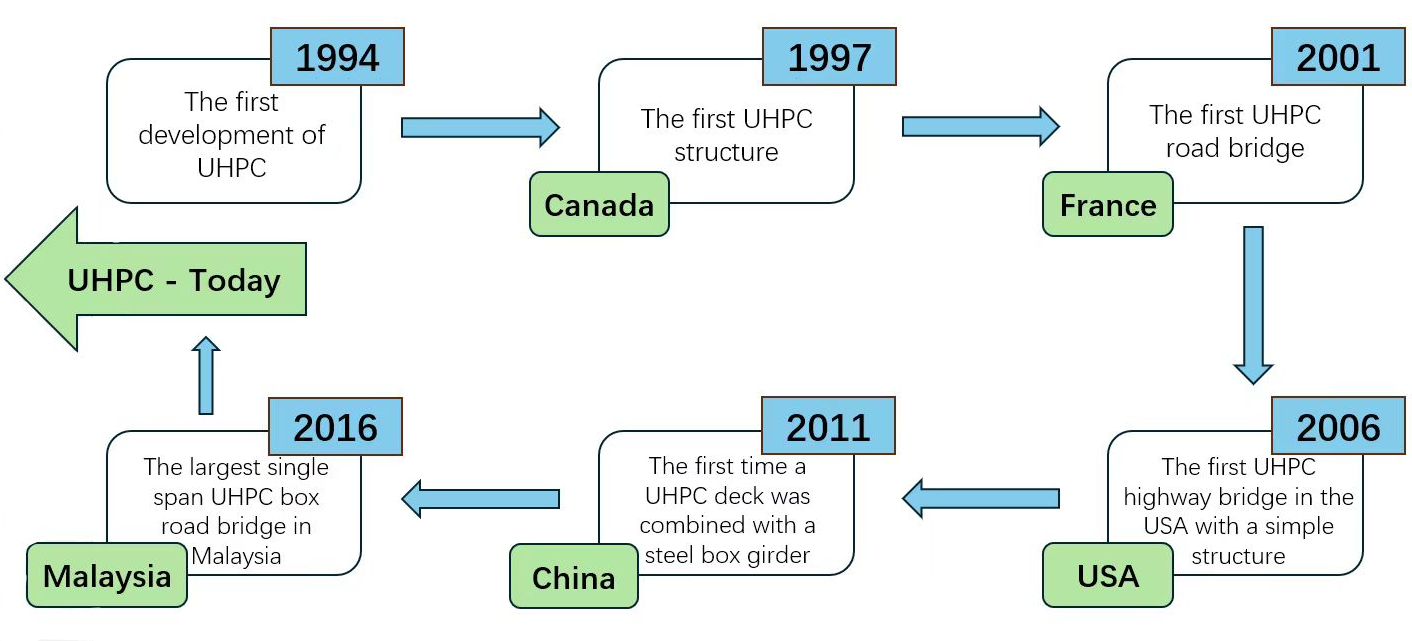
Figure 1: Global development of UHPC (data from: [4-7])
2.2. Material properties of UHPC
UHPC is a dense material formed by tightly packing particles of different particle sizes. As shown in figure 2, in the gaps between millimeter-sized aggregates, smaller particle-sized materials such as mineral powder and silica fume are used as reactive mineral fillers, while limiting the maximum particle size of the coarse aggregate to increase compactness and reduce internal porosity and structural defects [8]. Due to the substantial inclusion of cementitious materials like cement and silica fume, a high-efficiency superplasticizer (about 2% of the cement's weight) is required to enhance the water-to-binder ratio, improving the mechanical strength of UHPC [8, 9]. Chen [10] found that part of the ultra-high mechanical properties of UHPC mainly come from the internal addition of reinforced staple fibers (e.g., steel fibers). The excellent toughness and high tensile strength of steel fibers provide varying degrees of tensile stress, which can effectively improve the brittleness characteristics of UHPC caused by its high strength and uniformity, and reduce the problem of porosity and microcracks easily generated in concrete components [8, 9].
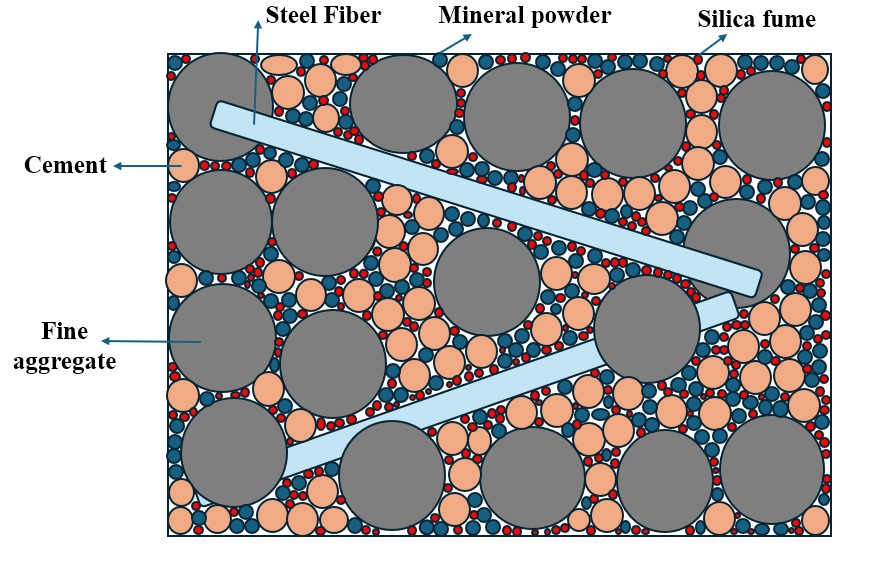
Figure 2: Schematic diagram of UHPC composition
As shown in table 1, the compressive strength, tensile strength, and other mechanical properties of UHPC significantly surpass those of NC. The tensile strength of NC is only about 1/10 of its compressive strength (around 2 Mpa), which is prone to developing cracks and holes in the tensile area when subjected to large bending moments [10]. In contrast, UHPC, with its excellent ductility, allows bridge components to maintain a certain capacity to support bending and tensile loads even after early concrete cracking [4]. In addition, the low permeability and porosity of UHPC makes bridges reinforced with this material more durable in harsh climate and outdoor environment, can extend the life circle of bridges [11]. Moreover, UHPC contains a higher amount of cement compared to conventional concrete, and its ultra-low water-cement ratio can also greatly improve the compressive performance of the material [9]. Therefore, it can be concluded that using UHPC for bridge reinforcement and maintenance is an effective choice.
Table 1: Comparison of the main mechanical properties of UHPC and NC (data from: [12])
Project | UHPC | NC |
Tensile strength (Mpa) | 4.5-24 | 2.5-2.8 |
Compressive strength (Mpa) | 120-180 | 20-40 |
Flexural strength (Mpa) | 18-35 | 2-5 |
Elastic modulus (GPa) | 37-55 | 14-41 |
Poisson's ratio | 0.19-0.24 | 0.11-0.21 |
Creep coefficient | 0.2-1.2 | 1.4-2.5 |
3. Analysis of UHPC reinforcement applications
3.1. Bridge decks
The bridge deck is a load-bearing structure of the bridge that directly bears the wheel pressure of the vehicle. For long-span Bridges, reinforced concrete materials or steel structures are generally used for construction. Since the bridge deck is the component directly subjected to wear and tear, standard reinforced concrete bridge decks are particularly vulnerable to environmental factors. Temperature changes, freeze-thaw cycles, and rainwater erosion can all directly cause damage to the bridge deck [3]. For steel decks, the orthotropic steel bridge deck has the advantages of light weight and high strength. However, with increasing traffic volume and the long-term cyclic load of overloaded vehicles, structurally weak areas with low local stiffness, such as plate welds, are highly susceptible to fatigue-induced cracks [13]. As shown in figure 3, orthotropic steel bridge decks are prone to cracking at the connection between U-ribs and the steel deck.
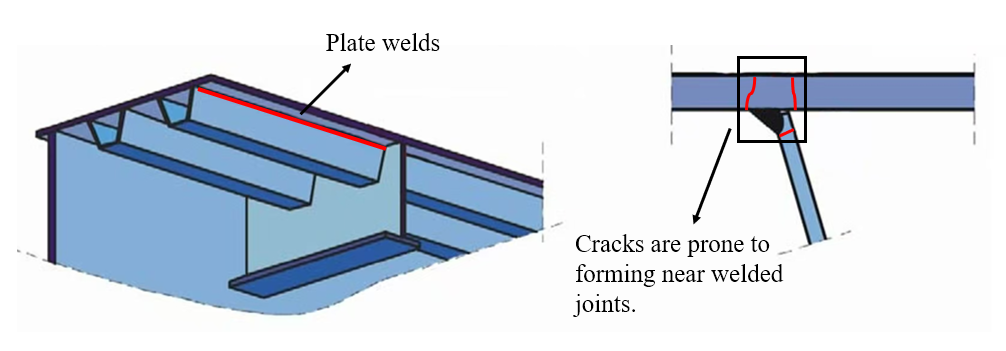
Figure 3: Schematic diagram of cracking of steel bridge deck [14]
In this regard, the current research focuses on applying a layer of UHPC on the bridge deck, utilizing its high compressive strength to enhance the bridge's fatigue resistance. UHPC's tensile strength and toughness effectively prevent crack propagation caused by cyclic loads, and a thin layer of just 2.5cm~5.0cm is sufficient to provide the necessary load-bearing capacity, reducing material usage [3]. For steel bridge decks, UHPC’s superior bonding strength and adhesion create a strong composite structure with the steel deck, enhancing overall rigidity and extending the service life. Additionally, UHPC’s flowability and plasticity make it easy to shape during construction, allowing it to conform to complex bridge structures without requiring major modifications to the existing structure. This reinforcement method not only increases load-bearing capacity but also significantly reduces maintenance costs, making it an ideal solution for improving the durability and safety of bridges.
Shao et al. [15] proposed a steel-UHPC orthotropic lightweight composite bridge deck structure, primarily used for reinforcing steel bridges that have developed fatigue cracks. In the 2018 deck renovation of the Junshan Yangtze River Bridge in Wuhan, this structure, equipped with transverse steel plates, effectively distributed localized loads and reduced the stress at welded joints, lowering the stress amplitude to 14%~21% of the original, thereby controlling fatigue damage [13]. In addition, UHPC overlay decks are used in several countries around the world to reinforce bridges. The Mud Creek Bridge in Iowa, United States, was laid with a 1.5-inch-thick UHPC layer, and studies have shown that UHPC can increase the flexural strength of the positive moment region by about 18% and enhance the bridge deck stiffness [16]. The Chillon Viaduct, a box-girder highway bridge built in Switzerland in the 1960s, underwent deck repairs in 2015, with a 45 mm thick UHPC layer applied to enhance the deck's transverse bending capacity and longitudinal stiffness, at a reinforcement cost of approximately $235 per square meter, much lower than traditional methods [17].
3.2. Bridge girders
The main girder is the primary load-bearing component of a bridge, responsible for transferring the bridge load to the piers through the supports at both ends. However, for steel or reinforced concrete bridges, the beam ends are highly prone to corrosion in humid environments due to water accumulation, especially at the joints. External factors such as humidity and temperature have been found to accelerate the corrosion of steel bars at the ends of the main girders, significantly weakening the strength, resulting in cracking and spalling of the concrete [18]. In one instance, a water leak at the expansion joints of the main girder caused extensive concrete shell spalling within five years, which seriously shortened the service life of the bridge [16]. The excellent corrosion and crack resistance properties of UHPC material make it very suitable for girder reinforcement. Therefore, the use of UHPC materials with low permeability and porosity on the main girder has been a major research hotspot in recent years.
The steel fibers in UHPC can greatly reduce the use of transverse prestressed steel bars in the preparation of the main beam and help to reduce the cross-sectional area of the beam body, effectively controlling the size and self-weight [19]. Through the experiments of Lukić B et al. [20], it can be found that the maximum shear stress of UHPC specimen with 2% volume fraction steel fiber (the length is 13mm, and the diameter is 0.2mm) can reach 70MPa, and the shear strength is about 1.55 times that of the specimen without steel fiber. However, due to the high production cost of UHPC, its use is primarily limited to reinforcing beams, particularly in areas with cracks or damage. The exceptional properties of UHPC can compensate for the shortcomings of the NC to some extent. By applying UHPC to the surface of the main beam as shown in figure 4, the bending resistance of the beam is effectively enhanced, and mid-span deflection is reduced. For girder ends that are susceptible to corrosion, UHPC can seal cracks and block the ingress of moisture and corrosive substances (e.g., salts), thereby slowing down the corrosion of the steel reinforcement.
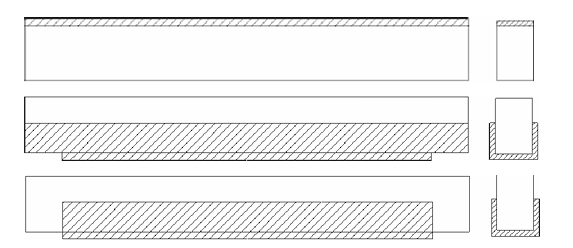
Figure 4: Three types of girders covering reinforcement [21]
In 2006, a UHPC bridge constructed in Wapello County, Iowa, utilized I-shaped UHPC girders directly. According to Graybeal [22], the flexural performance of I-shaped NC beams is much lower than that of UHPC beams, and the application of prestressed UHPC beams contributes to the success of the project. In addition, the load-bearing capacity of beams reinforced with UHPC is also much higher than that of corroded reinforced concrete or steel beams. Research by Zmetra et al. [23] shows that under a ductile failure mode, the load-bearing capacity of beams can be completely restored through UHPC repair. Under the same section loss condition, the load-bearing capacity of the beams repaired with UHPC increased by more than 500% compared to the corroded ones and by about 28% compared to intact beams [23].
3.3. Bridge piers
The piers in a bridge are responsible for supporting the superstructure of the bridge and transferring the dead load of the upper structure, as well as the live loads from vehicles, pedestrians, and others to the foundation. However, as the foundation soil is subjected to cyclic live loads for a long time, it will lead to the gradual sinking of the foundation. Due to inconsistent settlement across different locations, uneven foundation settlement may occur, which may lead to cracks and even structural damage of the pier abutment in severe cases [24]. In regions with high seismic activity, the unevenness of the foundation soil makes pier platforms more susceptible to deformation under seismic loads. In addition, like the main girder, the pier abutment is also susceptible to environmental influences. In humid and highly salinity environments (e.g., coastal areas), water and chlorides can penetrate the pier through cracks, and the internal steel bars will expand in volume after corrosion, resulting in spalling of the concrete protective layer and weakening of the cross-section [24].
One solution of this issue is to wrap the structure with a layer of UHPC for reinforcement. UHPC can seal the cracks and effectively prevent corrosive substances from penetrating. Wrapping the bridge pier with UHPC not only seals the cracks but also increases the cross-sectional size, which enhances the load-bearing capacity of the pier. Additionally, with the inclusion of steel fibers, a significant amount of energy is required for the fibers to be pulled out, which improves the structure's energy dissipation capability. Zhao et al. [25] found that when the strain rate is between 4.7 and 11.0 s-1, the addition of 1.5% steel fibers can increase the energy absorption capacity of UHPC by 2.5% to 41%. Similarly, research by Chen [10] shows that incorporating steel fibers enhances the bending strength and toughness of UHPC, reaching two times and four times that of normal fiber-reinforced concrete, respectively. In the event of a dynamic impact, this ensures maximum structural integrity and reduces the possibility of component breakage.
In 2014, Canada completed the pier jacket renovation project of the Mission Bridge (figure 5), which was the first time that UHPC materials were applied to the seismic reconstruction in British Columbia [26]. According to tests, the 28-day average compressive strength of UHPC specimens can reach 148 MPa, while the tensile strength ranges from 6 to 10 MPa [26]. The application of a UHPC pier jacket has proven to provide reliable seismic performance for the Mission Bridge, effectively extending its service life. Additionally, UHPC, with its exceptional mechanical properties, allows for the application of a very thin protective layer while maintaining sufficient seismic deformation capacity, making it more convenient for bridge pier construction in confined or size-restricted spaces [16]. Compared to other reinforcement methods, such as hoop or belt reinforcement, UHPC jackets has more advantages in cost and is well-suited for projects with tighter budgets [24].
|
|
(a) | (b) |
Figure 5: (a) Pier before reinforcement; (b) Pier after pouring UHPC jacket [26]
4. Issues with UHPC reinforcement
The development of UHPC materials has received extensive attention from various engineering fields. In the application of reinforcement, most UHPC materials are only used in the critical components of the bridge due to the high production cost and have not been widely used in the main construction. UHPC still faces many challenges in the process of practical implementation.
(1) High cost of raw materials
Compared with NC, various fine-grained materials like silica fume and steel fibers need to be added to enhance its mechanical properties during the formulation process, which significantly raises production costs. In addition, the production of UHPC imposes stringent requirements on raw materials (e.g., the morphology of the steel fibers and the diameter of the fine aggregate), which directly influence the overall material cost of UHPC [3].
(2) Complex construction process
The preparation of UHPC has high requirements for material proportion, mixing technology and construction environment. To achieve optimal particle packing, the various constituent materials must be strictly proportioned according to the sizes. Since UHPC requires the addition of high-efficiency superplasticizer and steel fibers in the progress of producing, the mixture tends to form a clump during the mixing process. As a result, the equipment requirements at the construction site are relatively high [12].
(3) Impact on the ecological environment
During the production process of UHPC, a large amount of greenhouse gases is generated. Habert et al. [27] found that the carbon dioxide emitted by producing one ton of concrete is approximately equivalent to burning one ton of coal, which contradicts the global sustainable development goals. Additionally, to achieve the high strength of UHPC, it needs to be maintained for a long time under high temperature and autoclave conditions, this process also consumes a lot of energy and further increases carbon emissions.
5. Conclusion
In this paper, the specific application of UHPC in the field of bridge reinforcement is systematically studied, focusing on the three critical components of the bridge deck, main girder and pier.
(1) By applying a thin layer of UHPC on the bridge deck, the strength and toughness of the deck are enhanced, effectively distributing stress concentrations and preventing the formation of fatigue cracks and deformations on the surface. Furthermore, UHPC can reduce the risk of cracks at welded joints, improving the overall structural durability.
(2) In main girder reinforcement, UHPC can enhance the load-bearing capacity and overall durability of the girder, slowing down fatigue damage and corrosion-induced spalling caused by environmental factors. Additionally, the dense structure and durability of UHPC can effectively reduce the risk of crack propagation and water infiltration, further extending the service life of the bridge. Moreover, UHPC has a repair function, allowing it to be used for restoring damaged girders and recovering the structural performance.
(3) Covering the surface of the pier with UHPC can significantly enhance its resistance to corrosion and seismic impact, which extends its service life while protecting it from environmental degradation. The UHPC reinforcement method is highly flexible, enabling effective strengthening without altering the original structure and reducing construction complexity and costs.
Although UHPC has shown outstanding performance in bridge reinforcement, problems like high cost and strict preparation requirements also limit the wide application globally. In the future, researches should be focused on reducing the production cost, simplifying the preparation process, and improving the material ratio, etc., so as to promote the application and development of UHPC bridges in the world.



